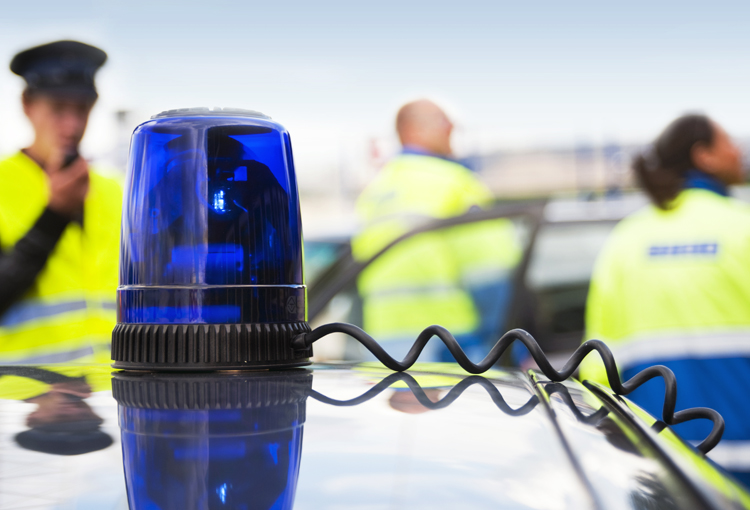A new six-month trial scheme will see North East Ambulance Service (NEAS) and the four Fire and Rescue Services based in the region work together to save more lives.
Demand on the Ambulance Service has increased by nearly 20 per cent since 2007. During the past ten years, firefighters nationally have been attending fewer fires, thanks to their successful programmes of community safety work. At the same time, the variety and complexity of rescue incidents firefighters respond to has broadened along with the specialist skills needed to meet these challenges. These changes in activities have resulted in demand for FRS services remaining extremely high.
The Fire and Rescue Service (FRS) is not funded to provide the response to medical emergencies, however, it is already carried out in some FRSs by employees on a voluntary basis. The trial is part of a review of the terms and conditions of firefighters by the National Joint Council for Local Authority Fire and Rescue Services, looking at the current and future demands on the service and profession.
Emergency Medical Responders
NEAS Director, Caroline Thurlbeck said: “NEAS receives a new 999 call every 65 seconds, and in an emergency, seconds count.
“During this innovative trial, an Emergency Medical Responder (EMR) will be dispatched at the same time as an ambulance. Our ambition for this trial is to improve the survival rate for those people who suffer from http://mangar.co.uk/2016/01/13/blue-light-services-join-forces-launch-north-east-emergency-medical-responder-scheme/a life-threatening illness or injury in the community. The location of EMR’s within local communities could mean they are nearer to the scene and can deliver lifesaving care in those first critical minutes of the emergency until an ambulance clinician arrives, enhancing the usual emergency medical response from NEAS.
Evidence shows that an early intervention with a defibrillator or CPR can improve survival chances and also the quality of life for the patient afterwards.”
Latest figures show that a quarter of all cardiac arrests attended by NEAS have a return of spontaneous circulation, with just over three percent of patients surviving to be discharged from hospital.
During the trial, Emergency Medical Response Units, in the form of fire appliances, will deliver emergency medical services when requested by NEAS. The emergency medical services included may involve attending calls where people are suffering from chest pain, difficulty in breathing, cardiac arrest, and unconsciousness not due to trauma.
Medical Training
Emergency Medical Responders have been trained to enhance their existing medical care knowledge, including basic life support by managing a patient’s airway, giving oxygen therapy, including assisted ventilation, delivering cardiopulmonary resuscitation (CPR) and defibrillation using a semi-automatic AED and controlling blood loss.
The EMR’s are equipped with a kit which includes oxygen and an automated external defibrillator (AED) to help patients in a medical emergency such as a heart attack, collapse or breathing difficulties.
Chief Fire Officer Ian Hayton from Cleveland Fire Brigade said: “The scheme involves trained firefighters attending incidents in areas where we can reach a casualty and maintain life or reducing suffering and anxiety until a paramedic arrives. This really is a lifesaving partnership; Cleveland Fire Brigade staff can complement and work alongside the professional healthcare staff at North East Ambulance Service to improve patient care outcomes. Cleveland Fire Brigade’s ethos is to make a difference to the lives and safety of our local community. This critical partnership with NEAS allows our firefighters another opportunity to demonstrate how they can achieve that goal.”
Northumberland Fire and Rescue Service Assistant Chief Fire Officer Mark McCarty said: “We are looking forward to working in partnership with the North East Ambulance Service to provide an enhanced level of response to emergency medical incidents. Our firefighters are used to dealing with medical emergencies as part of their role and already work closely with NEAS colleagues in a number of emergency situations. In this pilot, if one of our teams is available when a medical emergency response is requested, we can be at the scene quickly to begin life-saving treatment while waiting for an ambulance crew to arrive, who will then be able to continue the treatment and provide specialist medical care. This is a great opportunity for us to use our skills and training to further benefit the whole community.”
Keith Wanley, the area manager for County Durham and Darlington Fire and Rescue Service, said: “We are extremely pleased to be involved in the regional emergency medical response trial, which will enhance the close working relationship and collaboration we have with our partner agencies. Our fire crews already save many lives through well-established home safety prevention work and by providing a professional response to a wide variety of incidents where people are trapped. From Monday, our fire crews will be expanding their response role to provide medical assistance to people with life threatening conditions, when requested by NEAS, until an ambulance crew can arrive. Also, from the end of January, they will be expanding their prevention work into a range of areas which will including advice and support to prevent trips and falls in the home and other health advice. We hope this trial will provide effective early intervention and support to save many more lives.”
Chris Lowther, Assistant Chief Fire Officer at Tyne and Wear Fire and Rescue Service, said: “Saving lives has always been at the core of what we do and crews are used to providing life-saving first aid at incidents. Our trial is looking at how we can extend that work in partnership with NEAS as a part of our clear purpose to create the safest communities.
“Responding to fires and emergencies will always be the top priority for our crews but it makes sense to enable properly trained firefighters to deliver appropriate medical assistance if they can get to the scene first while an ambulance is on its way.”
The trial will run until 30 June 2016 and will be monitored on a daily basis by all parties to ensure it remains an effective scheme offering a level of quality patient care in the local community. Throughout the trial data will be gathered to allow for a full evaluation following its completion.
Caroline added: “At NEAS we are already supported by Community First Responder volunteers who work tremendously hard and do a fantastic job in their local areas. The addition of EMRs will further strengthen our response in these communities and the two models will work side-by-side to save more lives.”
The trial officially launches this month in Tyne and Wear (11th Jan), Northumberland (11th Jan), County Durham and Darlington (11th Jan). Cleveland Fire Brigade, which has been providing this service for a number of years, is extending the service across the Teesside area throughout January.




